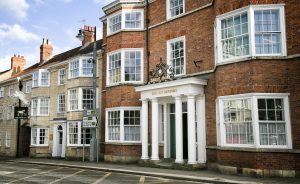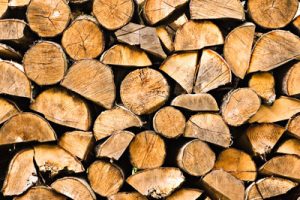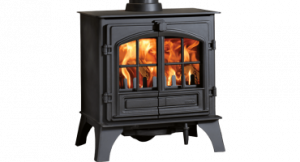We recently got asked this question by one our customers and we hope to answer this for many customers who ask the same question. You will read further about how Tadcaster stoves can benefit from locally sourced wood, readily available, but first of all, a little about Tadcaster. Tadcaster is a market town and civil parish in the Selby district of North Yorkshire. It is approximately 3 miles (5 km) east of the Great North Road, 12 miles (19 km) north-east of Leeds, and 10 miles (16 km) south-west of York. It is the last town the River Wharfe passes before it joins the River Ouse about 10 miles (16 km) downstream. It is in the Shire county of North Yorkshire, although historically split between the Ainsty of York and the West Riding of Yorkshire.
The Romans built a settlement and named it Calcaria from the Latin word for lime, reflecting the importance of the area’s limestone geology as a natural resource for quarrying, an industry which continues and has contributed to many notable buildings including York Minster. Calcaria was an important staging post that grew at the crossing of the River Wharfe on the road to Eboracum (York).
Tadcaster has a long association with the brewing industry because of the quality and accessibility of the local water supply. Rich in lime sulphate after filtering through limestone, in the right conditions freshwater springs – known locally as popple-wells – still bubble up near St Mary’s church.
Three breweries have survived to the present day, The Tower Brewery (Coors, formerly Bass), John Smith’s and Samuel Smith’s Old Brewery, which is the oldest brewery in Yorkshire and only remaining independent brewery in Tadcaster. A fourth brewery stood by the river on the site of the present central car park. Sam Smith’s draft horses are a common sight on the streets of the town. 
Local newspapers covering Tadcaster include The Press and the Wetherby News. The major regional newspaper in the area is the Yorkshire Post. The local BBC radio station is Radio York, and commercial stations include Minster FM and Capital Yorkshire.
Primarily, Tadcaster and the outlying area (Harrogate and York) has a large number of immediate suppliers of both Soft (Larch) and Hard (Ash, Oak, Beech, Sycamore) wood. Some is kil n dried, some is seasoned, but a moisture tester is always handy when approaching a new supplier. The moisture content should be no higher than 20%, but obviously the lower the better.
n dried, some is seasoned, but a moisture tester is always handy when approaching a new supplier. The moisture content should be no higher than 20%, but obviously the lower the better.
There is a myriad of wood types to choose from, all of which have their own burning qualities and properties and we would stress that for the most efficient and effective burn in your wood burning stove, only very dry wood should be used.
In addition, there are of course the compressed reclaimed ‘eco’ type of logs and briquettes. These tend to burn well and for a decent length of time because they are dense and very dry, however try to choose a product that does not break apart too easily.
Hardwoods are generally better for burning in wood burning stoves than softwoods. As a rule of thumb, hardwoods are produced by slow-growing deciduous trees (those trees that lose their leaves) and therefore the logs have a greater density than the faster growing softwoods from evergreen trees. Since hardwood logs are heavier than the same sized softwood log, they will provide you with much more heat output – up to 50%. For the stove owner, using hardwood logs means having to fill the stove up less often than they would with softwood logs!
Only ever use dried, fully seasoned chopped wood logs with a moisture content of less than 20%. As a rule of thumb, wood which is well seasoned makes a distinctive ‘clack’ rather than a dull ‘thud’ when knocked together. It will also feel much lighter than an unseasoned log. Other indicators of a seasoned log include the bark peeling away and cracking and splitting of the wood around the outside. Ideally wood should be seasoned outdoors for between 18 to 24 months – the harder the wood then the longer the seasoning. It should be stacked off the ground with plenty of space between the logs to allow air movement and with the top covered to keep rain and snow out. It is said that seasoned wood will give you approximately 50% more heat output than the equivalent unseasoned log, so that alone makes it very worthwhile.
As mentioned previously, a moisture meter, specially designed for testing wood logs, is highly recommended and a small investment which will pay for itself over and over again.
NEVER use wet or unseasoned (green) wood as this will cause nuisance smoke and a very disappointing fire. It could quickly result in the build-up of soot and creosote within the flue which, because of the higher temperatures of stove flue gases, could easily cause a flue or chimney fire. In addition, burning wet wood creates other environmental problems, a less efficient fuel economy and can eventually quickly clog your flue system and cowl. Burning wet or unseasoned wood will also reduce the effectiveness of the stoves’ Airwash system thus causing staining and blackening of the glass on the stove door.
So, why choose a wood burning stove?
A multi-fuel stove is designed to burn a wide range of materials:
– Wood logs
– Smokeless fuels
– Anthracite
– Peat/turf briquettes.
This is made possible by the inclusion of a central riddling grate and ashpan or a raised grate that has moving bars which allows the multi-fuel stove to efficiently burn a variety of types of fuel. Unlike wood burning stoves, the fuel bed needs to be de-ashed to create optimum combustion and efficient burning. The design of the multi-fuel stove therefore includes an ashpan underneath the grate to both collect and enable the safe removal of the ashes that are created during burning times.
What is a wood burning stove?
A wood burning stove runs far more effectively when the fuel is allowed to sit on a bed of ashes. For this reason, you will note that a wood stove usually has a fixed grate with a flat base. This ensures that the ashes created when logs are burning are collected in the base of the firebox to allow fresh logs to be placed on top: this greatly assists the combustion process.
A huge draw to wood burning is the noteworthy environmental benefits. During its lifetime, a tree will roughly absorb the amount of carbon dioxide you would typically expend burning logs in a wood stove. This means that wood burning is considered to be a low carbon option by organisations such as the Energy Saving Trust and, provided you purchase wood logs from a reputable supplier who ensures an investment of new trees to replace those being felled, this type of energy is renewable.
Despite the differences in their design, you will find that there is often little or no disparity in the heat outputs and efficiency levels of a wood burning stove when compared to that of a multi-fuel equivalent.
It is also worth noting that both types of stove incorporate innovations in heating technology such as Airwash and Cleanburn. The former draws heated air down the inside of the stove door glass to protect it from soot and smoke and therefore keep it clean and transparent whilst the latter increases combustion by allowing pre-heated, secondary air into the firebox to burn the excess hydrocarbons in the smoke. 
These stoves offer a great combination of aesthetic appeal and eco credentials that few heating appliances can match. From classic Cast-Iron models to designer versions in Steel or Ceramic, they make for a captivating focal point. And, with technology allowing for ever-larger viewing panes, the beauty of a real log fire can be enjoyed to its fullest.
Add to that the fact that responsibly-sourced, well-seasoned timber is a carbon neutral and energy-efficient fuel, and these stoves are attractive and practical capable of heating your whole home.
Although Tadcaster, Harrogate ands York are Smoke Control areas, you can still have a wood burning stove. Most makes and models now offer a smokeless burn and are DEFRA approved for use in these zones. Most retailers usually only suggest DEFRA Approved appliances for wood burning. You can call the Leeds Stove Centre if you require further information.
Energy sources such as electricity, gas, oil and fossil fuels such as coal cannot be taken for granted. While gas and oil are non-renewable energy resources, which means that they will run out one day, most of the world’s electricity is generated by burning fossil fuels which, is available in limited amounts. As a result, it’s realistic to expect the prices of different energy sources to get much higher in the future. In contrast to electricity, oil, coal, coke and gas, wood fuel is a renewable source of energy because the trees that are cut down for firewood can be replaced and is carbon neutral.
To summarise, here are the reasons why we believe you should choose a wood burning stove if you live in this area;